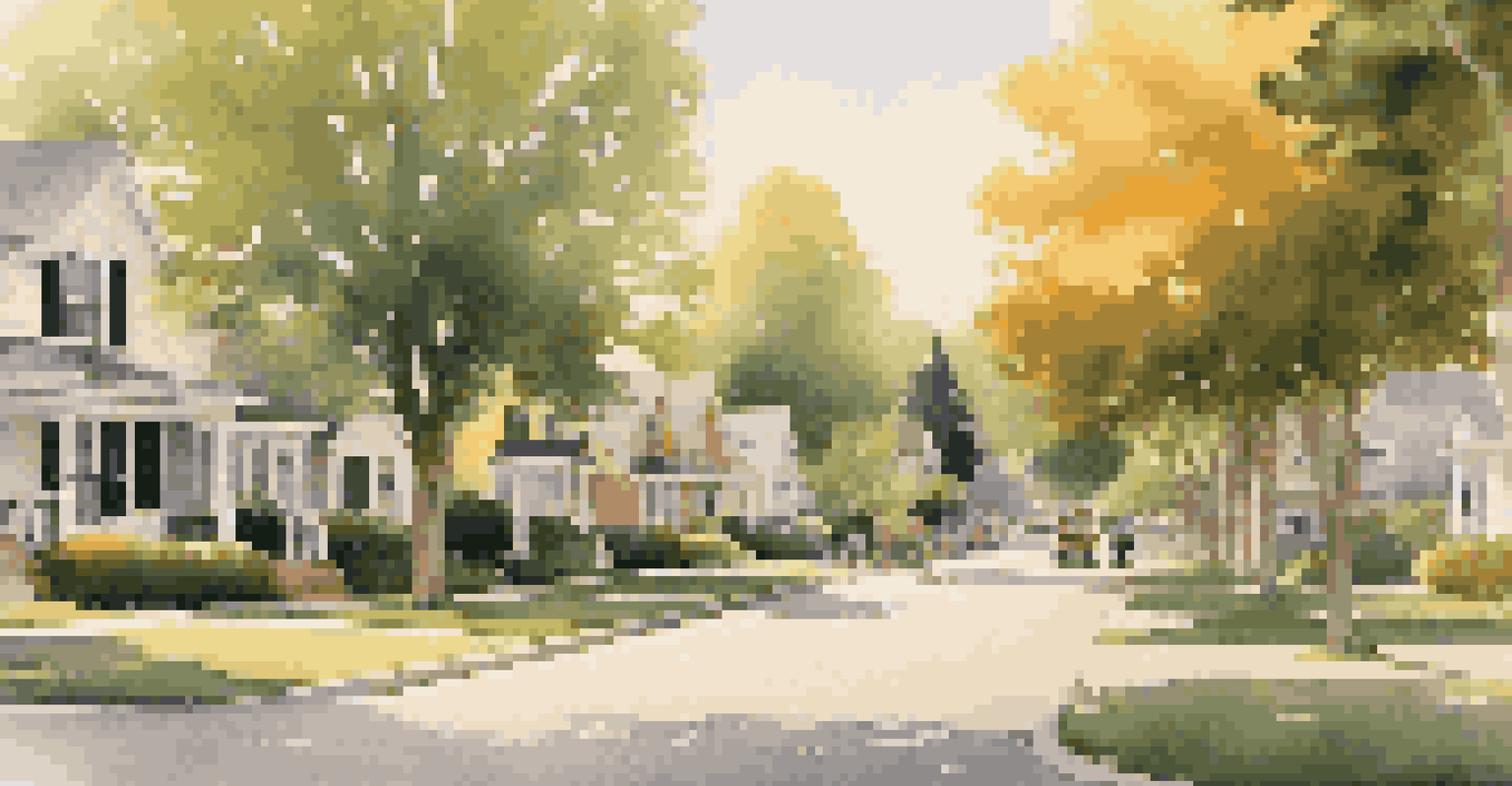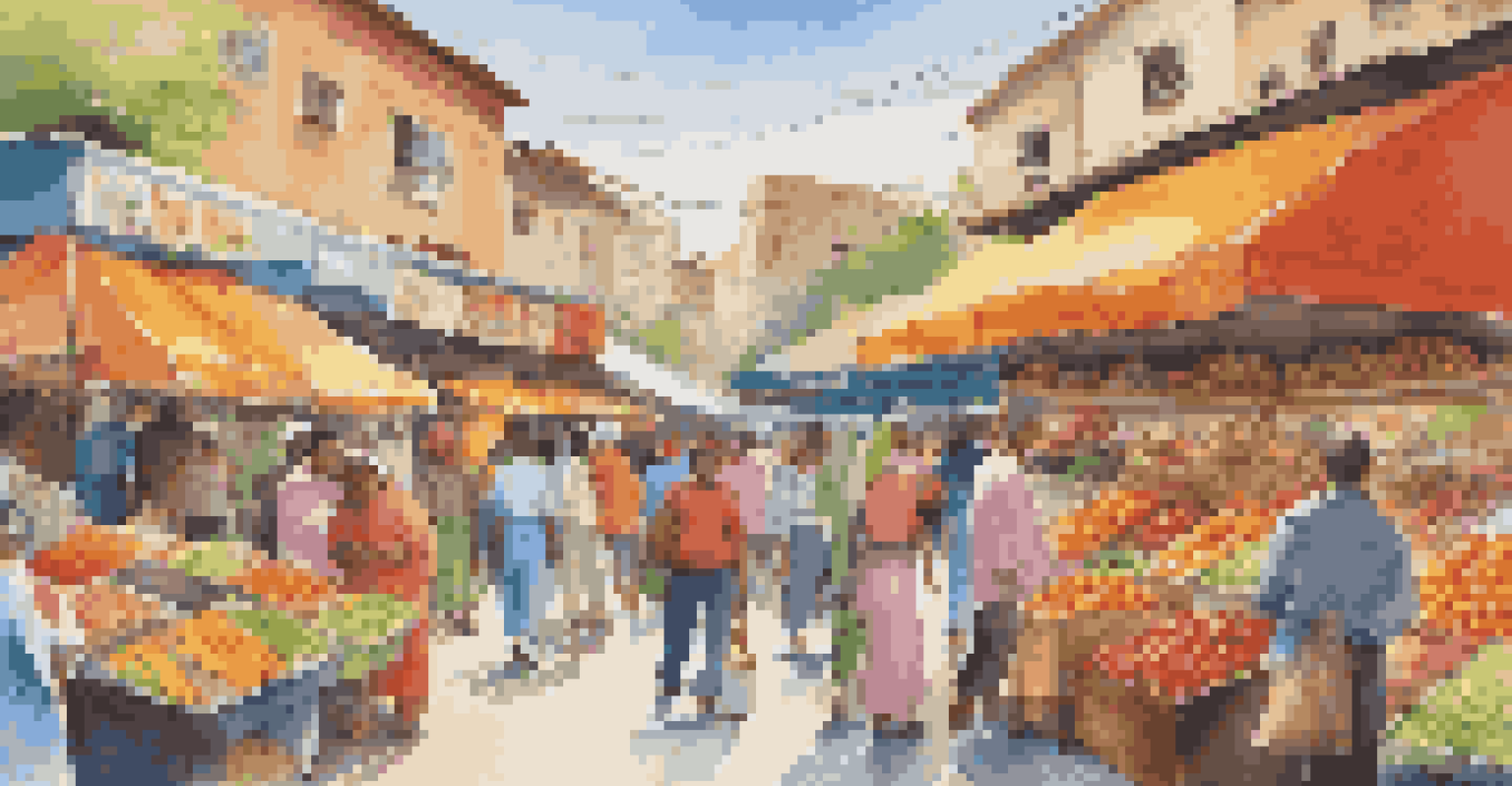The Psychological Impact of Neighborhood on Buyer Emotions

How Neighborhood Shapes First Impressions of Buyers
The moment a potential buyer steps into a neighborhood, an unspoken narrative begins to unfold. This narrative is woven from the sights, sounds, and even the scents that surround them. Imagine the difference between a bustling urban area filled with cafes and art galleries versus a quiet suburban street lined with trees; each environment tells its own story.
You never get a second chance to make a first impression.
First impressions are powerful, and neighborhoods play a crucial role in setting the tone for what buyers expect from a home. Buyers often associate neighborhoods with certain lifestyles or social statuses, influencing their emotions and decisions before they even set foot inside a property. A vibrant community can evoke feelings of excitement and possibility, while a neglected area might stir apprehension or doubt.
These initial feelings can lead to quick judgments about a property’s value and desirability. Ultimately, a neighborhood's character can either spark interest or extinguish it before the buyer has had a chance to explore the home itself.
Safety and Security: Key Emotional Drivers in Buyer Decisions
Safety is a top concern for many home buyers, and the perceived security of a neighborhood heavily impacts their emotions. When buyers feel secure in their environment, they are more likely to envision a happy future in that home, filled with family gatherings and neighborhood BBQs. On the flip side, an area with high crime rates can evoke anxiety and deter buyers from making an offer.

Consider how a friendly, well-lit street filled with children playing can create a sense of community and belonging. This feeling can be deeply comforting, making buyers feel like they are investing in not just a home, but a lifestyle. Conversely, a dimly lit street with few passersby may trigger concern and lead buyers to question their safety and the overall quality of life in that neighborhood.
Neighborhoods Shape Buyer Impressions
The character of a neighborhood significantly influences potential buyers' emotions and perceptions of a property's value.
Ultimately, the emotional weight of safety can significantly influence a buyer’s willingness to invest in a property. When buyers feel secure, they are more likely to form a positive attachment to a home, paving the way for a successful sale.
Community and Connection: Emotional Needs of Home Buyers
Humans are social creatures, and the neighborhoods we choose often reflect our desire for community and connection. Buyers are not just searching for a house; they are looking for a place where they can build relationships and create lasting memories. A vibrant neighborhood filled with parks, local events, and friendly neighbors can evoke feelings of belonging and happiness.
The best way to predict the future is to create it.
When buyers see signs of community engagement, like community gardens or local festivals, it can enhance their emotional attachment to a neighborhood. They start to imagine themselves participating in these activities, which can significantly impact their purchasing decision. The thought of having a supportive community nearby can make a property feel like a home, rather than just a place to live.
Conversely, a neighborhood that feels isolated or lacking in social interaction can lead to feelings of loneliness and uncertainty. Buyers may hesitate to invest in a home where they feel disconnected from the world around them.
Aesthetic Appeal: Visual Influences on Buyer Emotions
The visual elements of a neighborhood—architecture, landscaping, and overall upkeep—play a significant role in shaping buyer emotions. Aesthetic appeal can elicit feelings of attraction and desirability, making buyers more excited about the prospect of living there. For example, a neighborhood with manicured lawns and charming homes can evoke warmth and comfort.
On the other hand, a neighborhood with run-down buildings and neglected spaces can trigger negative emotions, leading buyers to question their investment. These visual cues can create a mental checklist in a buyer's mind, influencing their perception of value and desirability. If a neighborhood looks appealing, buyers are more likely to feel positive about the properties within it.
Safety and Security Drive Decisions
Buyers' feelings of safety in a neighborhood are crucial, impacting their willingness to invest in a home.
Therefore, the visual aesthetics of a neighborhood can serve as a powerful emotional driver, affecting how buyers perceive a home and whether they see themselves living there.
Cultural Influences: How Neighborhood Diversity Affects Buyers
Cultural diversity within a neighborhood can have profound effects on buyer emotions. A neighborhood that celebrates various cultures can foster a sense of inclusivity and openness, appealing to buyers who value diversity. The experience of living in a multicultural area can be enriching, offering opportunities to explore different traditions, cuisines, and perspectives.
Conversely, a lack of diversity may lead some buyers to feel disconnected or unrepresented, which can deter them from considering a home in that area. Buyers often look for neighborhoods that reflect their values and lifestyles; therefore, cultural fit can be a significant factor in their emotional response to a property.
Ultimately, the cultural tapestry of a neighborhood can create a sense of belonging or alienation, significantly impacting buyer sentiment and decision-making.
Proximity to Amenities: Emotional Impacts on Buyers
The convenience of nearby amenities—such as schools, grocery stores, and recreational facilities—can heavily influence buyer emotions. Proximity to these conveniences can evoke a sense of ease and comfort, making buyers feel that their daily lives will be simpler and more enjoyable. Imagine the relief of living just a short walk from a beloved coffee shop or a local park; these little luxuries can boost overall feelings of happiness.
On the flip side, neighborhoods that lack access to essential services can create feelings of frustration and inconvenience. Buyers may worry about long commutes or the hassle of traveling far for basic needs, which can overshadow their excitement about a potential home. If a neighborhood feels disconnected from essential amenities, buyers may feel hesitant to invest.
Amenities Enhance Buyer Comfort
Proximity to essential amenities can create a sense of convenience, greatly affecting buyers' emotional responses and purchasing decisions.
Thus, the availability of nearby amenities can play a significant role in shaping buyer emotions, ultimately impacting their decisions on whether to purchase a home.
Future Development: Long-Term Emotions and Buyer Decisions
The potential for future development in a neighborhood can evoke a mix of emotions in buyers. On one hand, the prospect of new businesses, parks, or improvements can create excitement and optimism about the neighborhood’s growth. Buyers may envision a vibrant community evolving around them, which can enhance their emotional attachment to the area.
Conversely, uncertainty about the direction of future development can lead to apprehension. Buyers might worry that new developments could change the character of the neighborhood or lead to overcrowding. These conflicting emotions can create a sense of hesitation, making buyers weigh their options more carefully.

Ultimately, how a neighborhood is perceived regarding future development can significantly influence buyer emotions and their willingness to make a long-term investment in a property.